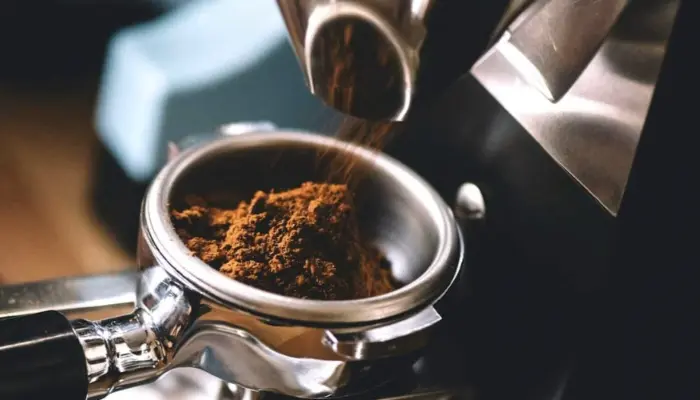Espresso is the foundation of many coffee drinks, and getting the right coffee dose is crucial for a perfect shot. Whether you’re a home barista or a professional, understanding how many grams of coffee to use can make or break your espresso. This guide will cover everything from standard measurements to advanced techniques, ensuring you pull a balanced and flavorful shot every time.
The Standard Espresso Coffee Dose
Most experts agree that a single shot of espresso requires between 7 to 9 grams of coffee, while a double shot typically uses 14 to 18 grams. These measurements are based on the traditional Italian espresso standard, where precision is key. However, modern specialty coffee shops often adjust these numbers depending on the roast profile, bean origin, and desired flavor.
The Specialty Coffee Association (SCA) recommends a brew ratio of 1:2 for espresso, meaning if you use 18 grams of coffee, you should aim for 36 grams of liquid espresso in the cup. This ratio ensures a balanced extraction, avoiding under or over-extraction.
Factors Affecting Coffee Dose
Several variables influence how much coffee you should use for espresso. Understanding these factors will help you fine-tune your brewing process.
Coffee Roast Level
Darker roasts are less dense due to prolonged exposure to heat, meaning you might need slightly more grams by volume compared to lighter roasts. Conversely, light roasts are denser, so the same weight may take up less space in the portafilter.
Grind Size
A finer grind increases extraction speed, requiring careful measurement to avoid over-extraction. A coarser grind may need a higher dose to compensate for the slower extraction rate. Consistency in grind size is essential for dose accuracy.
Machine Pressure and Temperature
Higher-pressure machines (9-10 bars) extract flavors more efficiently, sometimes allowing for a slightly lower dose. If your machine operates at lower pressure, increasing the dose may improve extraction. Temperature stability also plays a role—fluctuations can lead to inconsistent results.
Portafilter Basket Size
Different portafilter baskets hold varying amounts of coffee. A single-shot basket fits 7-9 grams, while a double-shot basket accommodates 14-18 grams. Using the wrong dose for your basket can lead to channeling or poor extraction.
Measuring Coffee for Espresso
Precision is critical when dosing espresso. Even a one-gram difference can alter the taste significantly. Here’s how to measure correctly.
Using a Scale
A digital scale with 0.1-gram precision is the best tool for measuring coffee. Place your portafilter on the scale, tare it, then add coffee until you reach the desired weight. This method eliminates guesswork and ensures consistency.
The Importance of Tamping
After dosing, tamping compresses the coffee evenly. Uneven tamping can cause channeling, where water bypasses the coffee grounds, leading to uneven extraction. Apply consistent pressure (about 15-20 kg) for optimal results.
Adjusting for Taste
If your espresso tastes sour (under-extracted), try increasing the dose slightly. If it’s bitter (over-extracted), reduce the dose. Small adjustments can help dial in the perfect shot.
Common Mistakes in Espresso Dosing
Even experienced baristas make dosing errors. Here are some pitfalls to avoid.
Inconsistent Weighing
Eyeballing the dose leads to variability. Always use a scale for accuracy.
Overfilling or Underfilling the Basket
Too much coffee can cause the puck to touch the shower screen, leading to messy extractions. Too little coffee results in weak, under-extracted espresso.
Ignoring Freshness
Coffee loses CO2 over time, affecting extraction. Always use freshly roasted beans (within 2-4 weeks) for the best flavor.
Advanced Dosing Techniques
For those looking to refine their espresso further, these advanced methods can help.
The Ristretto and Lungo
A ristretto uses a higher coffee-to-water ratio (e.g., 1:1), resulting in a sweeter, more concentrated shot. A lungo (1:3 or 1:4) is more diluted but highlights different flavor notes. Adjust your dose accordingly.
Single-Origin vs. Blends
Single-origin beans may require slight dose adjustments compared to blends, which are often designed for consistency. Experiment to find the best dose for each bean type.
Pre-Infusion and Pressure Profiling
Some machines allow pre-infusion (low-pressure water saturation before full extraction) or pressure profiling. These techniques can influence the ideal dose, so testing is necessary.
Conclusion
The perfect espresso dose depends on multiple factors, including roast level, grind size, and machine settings. While the standard dose ranges from 7 to 18 grams, fine-tuning based on taste and extraction quality is essential. By using precise measurements, understanding variables, and avoiding common mistakes, you can consistently brew excellent espresso. Experiment, take notes, and adjust as needed—because the best espresso is the one that tastes right to you.
Related topics:
What is the Best Espresso Powder for Baking?
How to Use Mr Coffee Espresso?


